
Nature's Pharmacy
Plants, animals, and fungi each contain thousands of chemical compounds, which
they use in everything from reproduction to defense against predators and
disease. Scientists have long harnessed such natural chemicals to fight human
illnesses, often synthesizing them (artificially creating them in the lab) and
developing them into drugs. In this slide show, take a look at a few species
that have offered up cures and salves for a number of
afflictions.—Claudine Ko
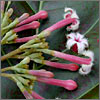

|
|
Cinchona tree
For centuries, Native Peruvians used dried bark from the South American
cinchona tree for various medicinal purposes, including as a muscle relaxant
and fever reducer. In the 1600s, Europeans began treating malaria patients with
the bark. Finally, in 1820, French chemists Pierre Joseph Pelletier and Joseph
Caventou extracted quinine from the bark, which became the first pure
chemical isolated from a plant and utilized against a specific disease.
|
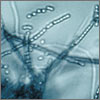

|
|
Streptomyces bacteria
Streptomycetes (genus Streptomyces) are soil bacteria essential
to the decomposition of organic matter. Highly prolific synthesizers of
antibiotics, they supply over half of the world's current varieties, including
important cancer-fighting drugs such as Actinomycin-D and Bleomycin.
|
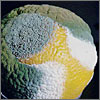

|
|
Penicillium mold
Penicillium notatum is a blue-green mold commonly found on
spoiled bread and fruit, particularly rotten tangerines. Ever since Scottish
chemist Alexander Fleming accidentally discovered the mold's antibacterial
properties in 1928, chemists have used it to produce many varieties of
penicillin, antibiotics that continue to be immensely valuable in treating
bacterial infections.
|
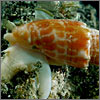

|
|
Cone snail
Found in tropical seas, carnivorous mollusks known as cone snails sport
venomous harpoons that can instantly paralyze small fish and other prey. The
snails' venom contains hundreds of compounds, some of which chemists have used
to create highly powerful, nonaddictive painkillers such as Prialt and
Ziconotide.
|
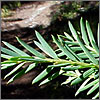

|
|
Pacific yew
In 1958, the National Cancer Institute commissioned a study of over 30,000
plant species in hopes of discovering cancer-fighting compounds. Scientists
found one in the bark of the Pacific yew, a conifer native to the Pacific
Northwest. Yet it took extractions from six Pacific yews to yield enough of the
anti-tumor compound paclitaxel for a single patient. Eventually, researchers
learned how to convert a compound from the tree's needles into paclitaxel,
which doctors now use to treat lung, breast, and other cancers.
|
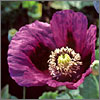

|
|
Opium poppy
The opium poppy is harvested by scoring the shells of its ripening pods. This
releases a milky latex that dries into a dark resin. The secretion contains
alkaloids, or basic nitrogen-containing compounds, many of which have
physiological effects. The most important alkaloid in opium is morphine, a
highly addictive but very powerful painkiller.
|
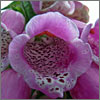

|
|
Foxglove
In the late 18th century, scientists discovered that extracts from the leaves
of foxglove, a biennial herb with violet or white flowers that is also known as
digitalis, could help treat heart conditions. Today, the isolation of pure
digitalis components such as digoxin allows reliable treatment of various
cardiac conditions, including congestive heart failure, atrial fibrillation,
and atrial flutter.
|
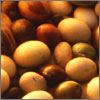

|
|
Soybean
In 1939, after a fortuitous accident, Percy Julian isolated the steroid
stigmasterol from soybean oil. From stigmasterol, Julian figured out how to
make other steroids, including progesterone, estrogen, testosterone, and
cortisone. This made many crucial drugs more accessible for patients suffering
from diseases such as arthritis and hormonal deficiencies.
|
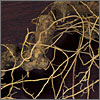

|
|
Mexican wild yam
In 1936, Japanese researchers discovered the compound diosgenin in the Mexican
wild yam. Like stigmasterol, diosgenin provides a starting material for
synthesizing many steroids, such as estrogen, testosterone, and progesterone,
as well as drugs such as the birth-control pill. Mexican yams are cheap and
plentiful, and just two to three of their roots can yield up to a pound of
diosgenin. In 1944, chemist Russell Marker and two partners formed a company called Syntex to make hormones from the yam, helping to launch the artificial sex-hormone industry.
|
|


We recommend you visit the interactive version. The text to the left is provided for printing purposes.
|










